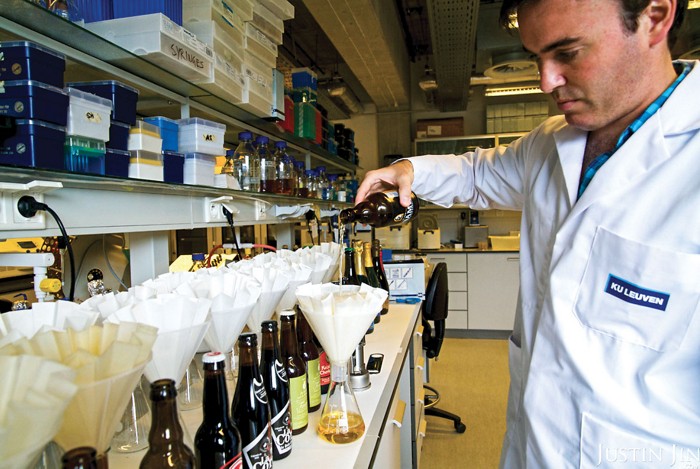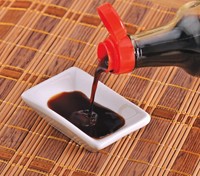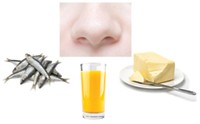Advertisement
Grab your lab coat. Let's get started
Welcome!
Welcome!
Create an account below to get 6 C&EN articles per month, receive newsletters and more - all free.
It seems this is your first time logging in online. Please enter the following information to continue.
As an ACS member you automatically get access to this site. All we need is few more details to create your reading experience.
Not you? Sign in with a different account.
Not you? Sign in with a different account.
ERROR 1
ERROR 1
ERROR 2
ERROR 2
ERROR 2
ERROR 2
ERROR 2
Password and Confirm password must match.
If you have an ACS member number, please enter it here so we can link this account to your membership. (optional)
ERROR 2
ACS values your privacy. By submitting your information, you are gaining access to C&EN and subscribing to our weekly newsletter. We use the information you provide to make your reading experience better, and we will never sell your data to third party members.
Food Science
Machine learning improves beer flavor
Algorithm correlates online reviews with chemical profiles of hundreds of beers, providing a roadmap to enhance taste
by Mark Peplow, special to C&EN
March 27, 2024
| A version of this story appeared in
Volume 102, Issue 10

Whether your preferred tipple is a crisp pale ale or a dark and malty stout, a glass of beer is a balm to the soul that’s hard to beat. But now, scientists in Belgium have shown that machine learning could help make beer even better, by predicting how to tweak a brew’s chemical profile to enhance its flavor (Nat. Commun. 2024, DOI: 10.1038/s41467-024-46346-0). The system could be particularly useful for improving the taste of alcohol-free beers, says microbial geneticist Kevin J. Verstrepen of KU Leuven, who led the team. “This is probably the most exciting application.”
The complex taste of beer is shaped by thousands of different flavor compounds, and brewers have traditionally used expert tasting panels to judge the quality of their products. But group tasting sessions are slow, subjective, and expensive to run. So Verstrepen’s team instead turned to online beer reviews and correlated those opinions with hard data about beer chemistry.
Over 5 years, the researchers used gas chromatography/mass spectrometry and other methods to profile more than 200 flavor compounds—along with pH, alcohol content, and other factors—in over 250 commercial Belgian beers, including blondes, tripels, and lagers. They also scraped 180,000 online reviews of those beers from the RateBeer website.
Then they trained machine learning models to find connections between the two datasets. The best model could predict which components of a beer’s chemical profile would lead to a greater appreciation among drinkers. The most reliable chemical predictor of beer appreciation was ethyl acetate, for example, although Verstrepen says that’s likely a proxy for a wider range of associated flavor esters. Protein content was also a key factor, possibly due to its effect on a drink’s mouthfeel.
The researchers then devised chemical cocktails of the most important appreciation predictors and their related compounds —including ethyl hexanoate, isoamyl acetate, and glycerol—and spiked commercial beers with them. In tests with a trained 16-person tasting panel, spiking significantly improved the overall appreciation of a Belgian blonde and an alcohol-free beer.
“I think it has a lot to tell us about how people react to flavor,” says Roger Barth, professor emeritus at West Chester University, who studied beer chemistry and wrote the book The Chemistry of Beer: The Science in the Suds. “But I’m not so sure that it’s going to affect the way they make beer.”
Still, the machine learning approach might help to improve the taste of alcohol-free beers. These are typically produced by removing alcohol from a regular beer using distillation or membrane filtration, which can unfortunately also extract flavor compounds. The researchers hope that their machine learning approach could offer a more strategic way to replace some of that lost flavor. They are now pursuing this idea with collaborators at Anheuser-Busch InBev, the world’s biggest brewing company, which partly sponsored the research.
They are also working with the company Bar.On, which is developing a system to produce bespoke “molecular beers” by dispensing ingredients from cartridges that tune bitterness, alcohol content, and other flavor features.
But any brewers concerned that the art and craft of their trade is being replaced by algorithms should not worry, adds Verstrepen. The model does not specify ideal concentrations of flavor chemicals, and brewers guided by its findings would still apply their judgment to tweak natural ingredients to achieve particular flavor profiles. “It’s still going to be very much an art to further improve beers,” says Michiel Schreurs, a flavor chemist at KU Leuven who developed the machine learning models.




Join the conversation
Contact the reporter
Submit a Letter to the Editor for publication
Engage with us on Twitter